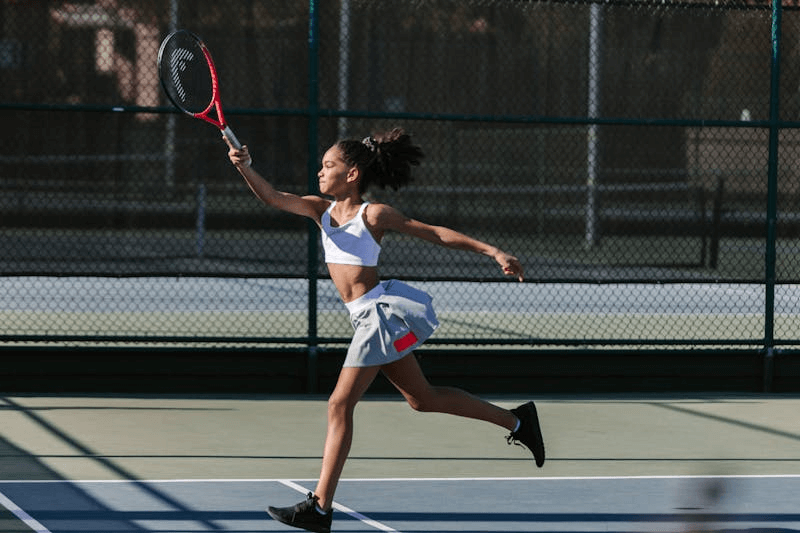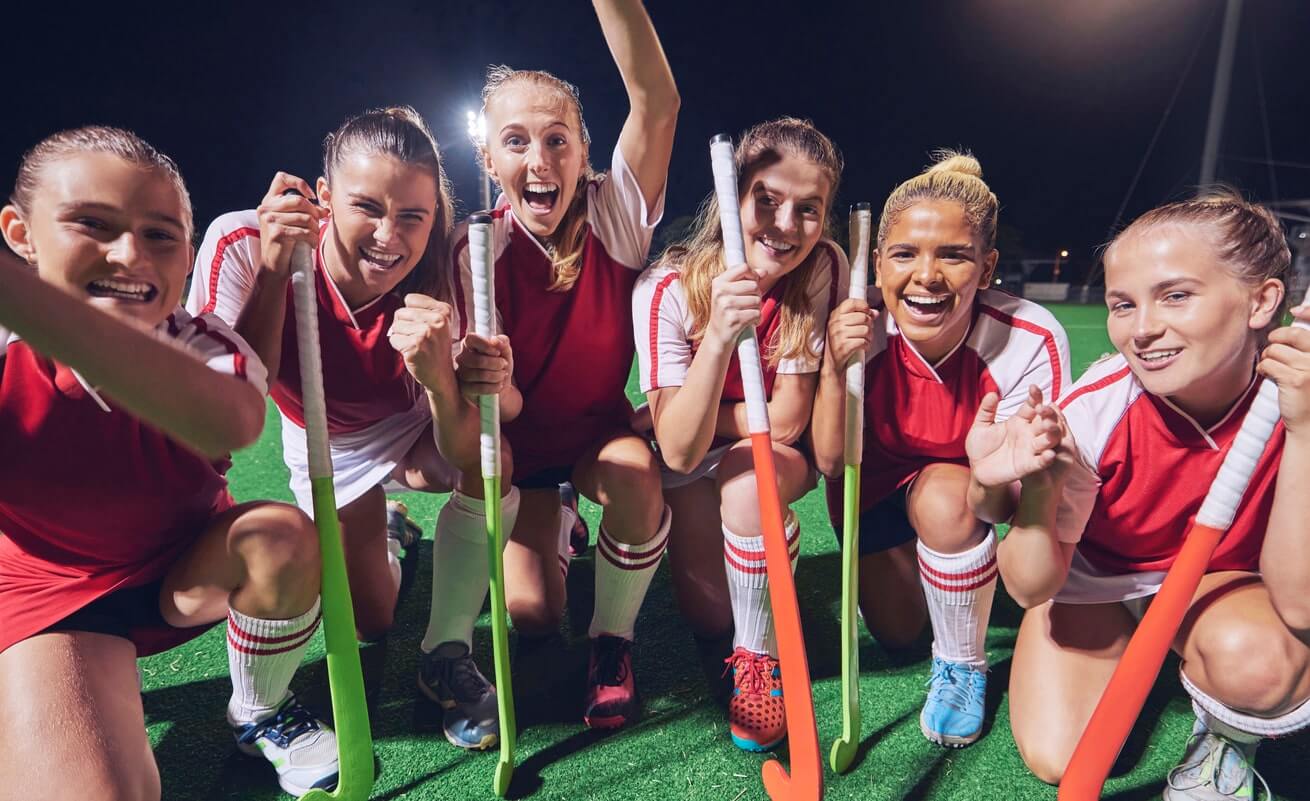Skills Taught in Sports Create Strong, Powerful, and Intelligent Women
According to an EY study , sports can certainly help develop leadership skills. They also provide people with a variety of physical and mental health benefits. 94% of female executives are active in sports, and no matter if it’s more of an engaging or laidback sport, these types of activities can provide women with a variety of benefits that translates to their personal and professional lives.
In the US, sports are very common, and children are typically encouraged to play them through school teams or clubs. Sports provide them with an outlet that's beneficial to their mental and physical health, instead of focusing solely on their academics. Women who continue to be active in sports have significant advantages, especially in their careers.
Teamwork
When it comes to competitive sports, especially those that require teamwork, you need to develop connections with their peers outside of the team.
Think of a sport like softball for example, individuals are usually assigned to play a certain position, such as third baseman or catcher, but they have to work with other players in different positions in order to win. It's not about them solely relying on themselves to do so. Although an individual may receive some recognition for their efforts, their individual accomplishments won't help the team win a game or a competition.
While an accountant may be highly skilled at identifying and rectifying financial irregularities, the company will not benefit unless they can properly work with other team members to resolve issues. Unless they can explain the errors to the other team members in an effective manner, the company's accounting procedures will not change. Strong teamwork can help everyone save time and frustration, which is a common procedure in sports.
Problem Solving
One of the skills that athletes typically learn during sports is how to solve problems. Each game, match, or competition presents a distinct challenge, and it is the goal to beat the other team or player. Every game has its own unique characteristics, and each player is unique in their own way.
In sports, many competitors spend their time watching the previous performances of their opponents and they seek to learn how individuals react to certain situations. By understanding the tactics of their opponents, they can prepare themselves for upcoming matches.
Problem-solving is a vital skill in business situations as well. Most companies face various competitors on a daily basis, and internal issues may include issues with productivity and the recruitment of skilled workers.
Through sports, women can develop their problem-solving skills and efficiently tackle the issues that a company may face. They can assess the problem and come up with possible solutions, which make them more likely to make informed decisions and keep a cool head in difficult situations within the workplace for example.
Goals
One of the skills that women excel at in sports is goal setting. In addition to being able to set goals, they also develop strategies to reach them. Whether it's improving their jump shot or completing a six-minute mile, setting objectives is an integral part of the process.
Most people work toward long-term and short-term goals. Leaders need to set long- and short-term goals. While most executives have immediate objectives, they'll likely have more expansive goals that they're targeting over the next few years.

Leadership Styles That Correlate to Everyday Life
There are many leadership styles that can be used in sports, and each of these can be used to motivate and develop a positive culture within an organization. Understanding the most prevalent leadership techniques can help coaches, managers, and administrators develop their own unique approach to leading their teams. Once young athletes become adapted to a particular leadership style, it’s common to replicate that style within the workplace and other aspects of life once they become adults.
The personalities of each member of a team will greatly affect their dynamics, which is why organizational leaders should be versatile when it comes to adopting a leadership technique. A style that works well for certain individuals may not be beneficial to others. Therefore, leaders and coaches should be flexible, self-aware, and intuitive.
Although there are many leadership styles that can be utilized in sports, there are a few key styles that stand out from the rest in the athletic and real world. Learning and becoming familiar with a leadership style will only translate to more success in other leadership roles later on in life.
Autocratic leadership
While autocratic leadership can be effective in certain circumstances, it can be not as effective when it comes to the performance of a team in higher-level competitions. A study from the Sports Journal found that athletes generally prefer to use a more direct style of leadership.
Democratic leadership

Laissez-faire leadership
Although some may prefer to be involved in the decision making process, those who utilize a laissez-faire style of leadership tend to be hands-off. The NLSC claims that this type of leadership allows individuals to make their own decisions based on their preference.
A leader who opts for a laissez-faire approach places a deep level of trust in his or her team, as they are given the freedom to make mistakes and learn from them. This type of leadership can foster motivation and creativity in those who are already skilled, but it may not be an effective technique for those who require more direction and structure to develop their talents.
Servant leadership
Servant leadership is a style of leadership that people who are passionate about giving back to their communities adopt. This is why it’s no surprise that this type of leadership is commonly used by sports managers and coaches.
Although servant leadership can be beneficial, it can also have a few disadvantages. For one, it doesn’t always work in scenarios requiring quick and decisive action. In addition, it can result in additional work for the leader. Lastly, it is rare for coaches to have the necessary experience and authenticity to adopt this type of leadership.
Supporting Young Female Athletes
Playing sports can provide young women and girls with the opportunity to develop their leadership skills and become more visible. Corporate support can help these individuals become more successful. As more females see professional athletes, college athletes, and high school girls playing sports, they will be more inspired to get involved.
Various public policies help provide more opportunities for women and girls to participate in sports. Studies have shown that this is the most effective way to encourage them to join. Schools and communities can also be targeted to provide more resources and options that are beneficial to them. Get involved more in your local community and support policies that promote sports for kids!

Keep These Tips in Mind as a Parent
It is important that your child is allowed to choose the sport that they want to play. Provide them with several options and support their choice.
You should teach your children to respect their coach, as it is vital for them to listen to and trust the instructions and advice given by the coach.
It is important for your children to learn from their mistakes. When they make a mistake, ask them what they could have done better and what lessons they can take from the experience. You should also provide them with feedback so they can ask for it.
You should be open-hearted, playful, understanding, and interested in your child's learning process. You should also be tolerant and accepting of their physical abilities and achievements.
When it comes to your opinions, be flexible and allow yourself to be wrong. Listen to the other party when necessary and let go of any desire to be in control or right.
The value of teaching young girls sports doesn’t just translate to successful results on the team, but the important lessons manifest into other areas of growth in their lives well into adulthood. Stay active, stay strong, stay confident with Goal Five.




Leave a comment
This site is protected by hCaptcha and the hCaptcha Privacy Policy and Terms of Service apply.